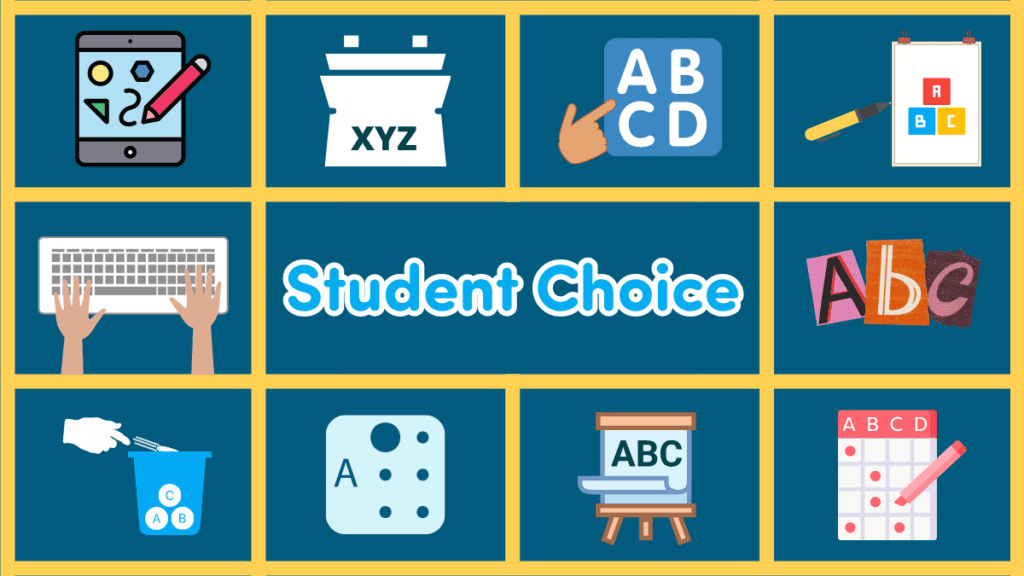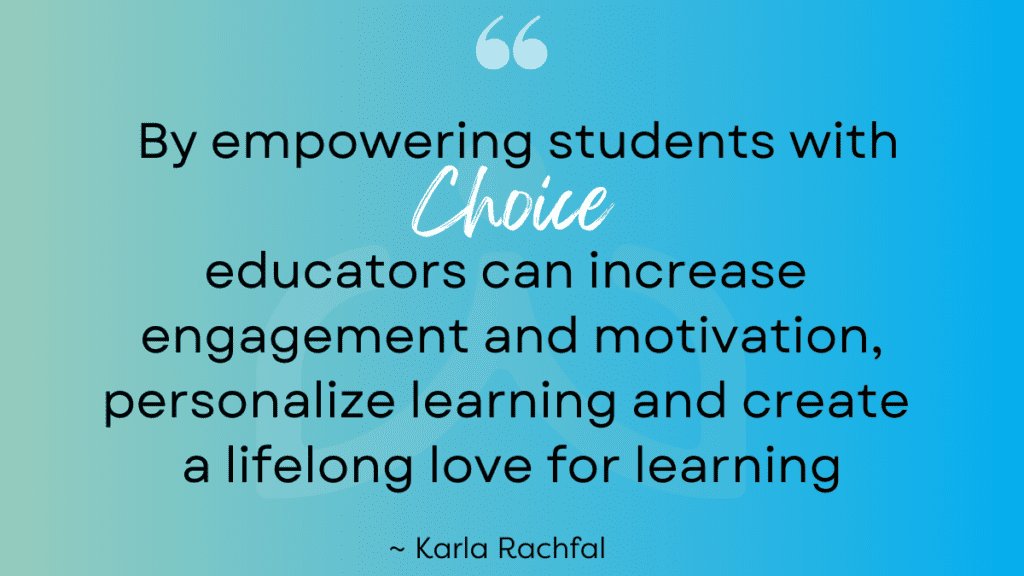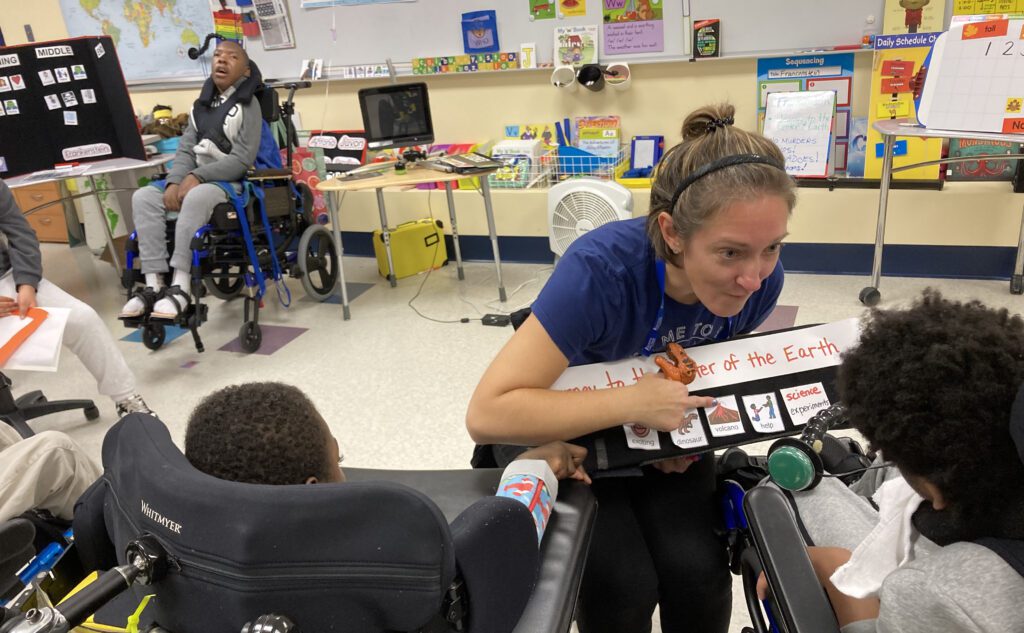Student Choice:
Opportunities for Student-Led Learning for Students Receiving
Special Education Services
Creating opportunities for student choice and student-led learning may open a world of possibilities for all learners including those receiving special education services.
What you like to add to your morning coffee. Which radio station do you prefer to listen to during the drive to school. Whether you’ll opt for the hot and sweaty yoga class, or the slow and calming one. We’re so used to making choices every day that we sometimes forget what a freeing, joyful experience making a choice can be. For some students many choices are made for them but many opportunities exist for student choice and student-led learning.

The benefits of building student choice into curriculum are well documented. They include:
- Increased engagement. When students have a choice in what they learn and how they learn it, they are more likely to be engaged and invested in the learning process. This can lead to increased motivation and a more positive attitude towards school.
- Improved self-determination. Giving students choices can help them develop a sense of control and autonomy over their learning, which is especially important for students with disabilities, who may feel marginalized or disempowered.
- Enhanced learning outcomes. When students are able to choose topics or activities that interest them, they are more likely to retain information and develop a deeper understanding of the material.
- Differentiated instruction. Student choice allows for differentiated instruction, which is important in special education classrooms where students may have a wide range of abilities and needs. By offering choices, teachers can better meet the interests and needs of individual students while providing opportunities for all students to demonstrate their learning and be successful.

Reasons why Student Choice isn’t offered more often
Students with disabilities may experience the freedom of choice less than their peers. Reasons that are cited include:
-
Resource Distribution. Different resources may be allotted where special education services are provided. Although it’s often said that special education is a service and not a place, there may be learning areas where a classroom response system such as classroom clickers may not be available.
-
Safety concerns. Students with disabilities may need more structure and supervision than other students, particularly when it comes to physical tasks or activities that pose a risk of injury or are complicated by mobility aids or medical equipment.
-
Lack of access. Some students with disabilities may have physical or sensory limitations that make it difficult for them to participate in certain activities. For example, a student with tactile and olfactory sensitivities may not be able to use certain types of art supplies.
Special educators often find innovative ways to remove these barriers to foster inclusion and offer choice. It’s important to find ways to incorporate choice into the educational experiences of all students whenever possible. By doing so, educators can help foster engagement, motivation, and a sense of ownership over their learning, which can lead to improved outcomes.
Ways of incorporating choice and student-led learning
There are many ways teachers can incorporate student choice into any classroom. Here are a few suggestions:
Choice of break activities. During scheduled breaks, allow students to choose from a list of activities, such as listening to music, reading, drawing, or engaging in a calming sensory activity.
Predictable chart writing. Predictable chart writing uses a model sentence or sentence starter that the student then finishes on their own. For example, the sentence might begin, “I like to eat _____” and the student completes the sentence with a word of their choice (pizza, watermelon, ice cream).
Choice of materials. Teachers can provide students with a selection of materials to work with, such as different types of art supplies, writing tools / alternative pencils, or sensory materials. This allows students to choose the materials that they are most comfortable with or that help them focus best.
- Choice boards. Choice boards allow students to choose how they show their understanding of a topic. They serve as “menus” from which students can pick how to show what they know. Check out these downloadable ELA choice boards from the North Carolina Department of Instruction for some inspiration.
- Choice review. In the daily morning meeting, remind students of the choices they may have already made that day. Did they choose what to wear? Did they choose what they wanted to eat for breakfast? Students may feel empowered when they’re reminded of some of the autonomy they’ve already demonstrated that day.
- Choice of topic. Teachers can provide students with some degree of control over their learning by allowing them to choose the next unit of study or writing topic. In the photo below, learners in Kim Kulasekaran’s classroom are deciding which Readtopia Unit they want to study next. Journey to the Center of the Earth seems to be the popular choice!


